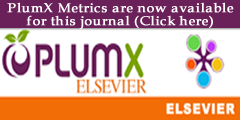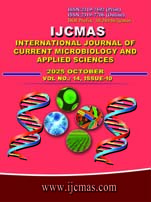


 National Academy of Agricultural Sciences (NAAS)
National Academy of Agricultural Sciences (NAAS)

|
PRINT ISSN : 2319-7692
Online ISSN : 2319-7706 Issues : 12 per year Publisher : Excellent Publishers Email : editorijcmas@gmail.com / submit@ijcmas.com Editor-in-chief: Dr.M.Prakash Index Copernicus ICV 2018: 95.39 NAAS RATING 2020: 5.38 |
Marine fungi play a vital role in the decomposition of lignocellulosic materials and nutrient cycling in mangrove ecosystems. This study investigates the diversity of marine fungi associated with the wood samples of Avicennia sp. collected from the estuary of Kadalundi, Kerala, South India. A total of 27 marine fungal species were isolated from the host plant, comprising 16 Ascomycetes and 11 Mitosporic fungi. The occurrence and frequency of each species were determined to understand the fungal composition of the mangrove wood substrate. Among the Ascomycetes, Aniptodera chesapeakensis, Savoryella lignicola, and Marinosphaera mangrovei were the most frequently occurring species, indicating their strong adaptation to the mangrove wood environment. In the Mitosporic fungi group, Periconia prolifica and Zalerion maritimum showed the highest frequency of occurrence, reflecting their ecological significance in wood degradation. The study highlights the species richness and composition of marine fungi associated with Avicennia wood, providing insights into their ecological roles in the estuarine ecosystem. These findings contribute to understanding fungal biodiversity in mangroves and offer baseline data for future studies on marine fungal ecology, bioprospecting, and potential applications in biotechnology, particularly in lignocellulose degradation and natural product exploration.
Alias, S. A. Zainuddin, N. and Jones, E. G. (2010): Biodiversity of marine fungi in Malaysian mangroves. Bot. Mar., 53: 545-554. https://doi.org/10.1515/bot.2010.066
Babich, H. and Stotzky, G. (1983): Developing standards for environmental toxicants: the need to consider abiotic environmental factors and microbe-mediated ecologic processes. Environmental Health Perspectives, 49:247-260. https://doi.org/10.1289/ehp.8349247
Blunt, J. W. Copp, B. R. Hu, W. P. Munro, M. H. Northcote, P. T. and Prinsep, M. R. (2008): Marine natural products. Natural product reports, 25(1): 35-94. https://doi.org/10.1039/B701534H
Booth, T. and Kenkel, N. (1986): Ecological studies of lignicolous marine fungi: A distribution model based on cordination and classification. In: Moss (eds) The biology of marine fungi. Cambridge University Press, pp 297-310.
Borse B. D., Borse K. N., Bhat D. J., Tuwar A. R. and Pawar N. S., 2012. Marine Fungi of India: Monograph, Broadway Publishing house, Panjim, Goa, India.
Devadatha, B., Sudeep, D. G., Jones, E. B. G., andSarma, V. V. (2021); Biodiversity of marine fungi in mangroves with reference to Muthupet mangroves, Tamil Nadu, East coast of India. Mar. Biodivers. 51 (6):603-615.
Hyde, K. D., 1988. Studies on the tropical marine fungi of Brunei. Bot. J. Linn. Soc., 98: 135-151.
Hyde, K. D. Sarma, V. V. and Jones, E. B. G. (2000): Morphology and taxonomy of higher marine fungi. Marine mycology: a practical approach, 172-204.
Jones, E. G. (2000): Marine fungi: some factors influencing biodiversity. Fungal. Diversity, 4: 53-73.
Jones, E. G. Hyde, K. D. Leano, E. Pointing, S. B. Poonyth, A. D. and Vrijmoed, L. L. (1998): Role of fungi in marine ecosystems. Biodiversity & Conservation, 7: 1147-1161.
Kohlmeyer, J. and Kohlmeyer, E. (1979): Marine mycology: the higher fungi. Elsevier.
Kohlmeyer, J. and Kohlmeyer, B. (1991): Illustrated key to the filamentous higher marine fungi, 34(1): 1-61.
Leong, W. F. Tan, T. K. and Jones, E. B. G. (1991); Fungal colonization of submerged Bruguieracylindrica and Rhizophoraapiculata wood. Botanica Marina, 34: 69-76.
Maria, G. L. and Sridhar, K. R. (2003): Diversity of filamentous fungi on woody litter of five mangrove plant species from the southwest coast of India. Fungal Diversity, 14(14): 109-26.
Nambiar, G. R. and Raveendran, K. (2009): Frequency and abundance of marine mycoflora in mangrove ecosystem of North Malabar, Kerala (India). Acad J Plant Sci, 2: 65-68.
Nambiar, G. R. and Raveendran, K. (2012): An Introduction to the taxonomic study of Indian marine fungi. Malabar Natural History Society, Calicut, Kerala
Pointing, S. B. Jones, E. B. G. and Jones, A. M. (1998): Decay prevention in waterlogged archaeological wood using gamma irradiation. International Biodeterioration& Biodegradation, 42(1):17-24.
Raveendran, K. and Manimohan, P. (2007): Marine fungi of Kerala: A preliminary floristic and ecological study. Malabar Natural History Society.
Sarma, V. V. (2019): Marine fungal diversity: Present status and future perspectives. In: Microbial Diversity in Ecosystem Sustainability and Biotechnological Applications; Springer: Singapore, 267-291.
Sarma, V. V., K. D. Hyde and B. P. R. Vittal, 2001. Frequency of occurrence of mangrove fungi from the east coast of India. Hydrobio., 455: 41-53.
Wijayawardene, N. N., Dai, D. Q. Jayasinghe, P. K., Gunasekara, S. S., Nagano, Y., Tibpromma, S., Suwannarach, N. and Boonyuen, N. (2022): Ecological and oceanographic perspectives in future marine fungal taxonomy. J. Fungi, 8: 1141. https://doi.org/10.3390/jof8111141 |
 |
 |
 |
 |